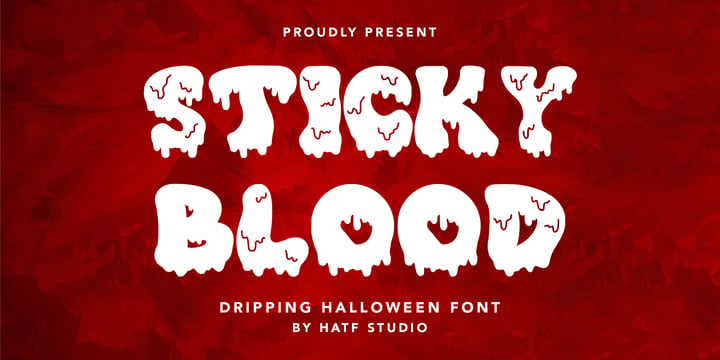
Sticky Blood Font Family was designed by Asep Rendi, and published by Arendxstudio. Sticky Blood contains 1 styles and family package options.

Sticky Blood Font Family was designed by Asep Rendi, and published by Arendxstudio. Sticky Blood contains 1 styles and family package options.
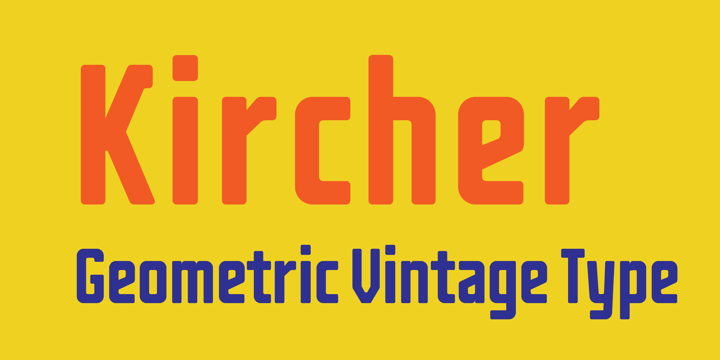
Kircher Font Family was designed by Pedro Biz, and published by Turto Studio. Kircher contains 1 styles and family package options.
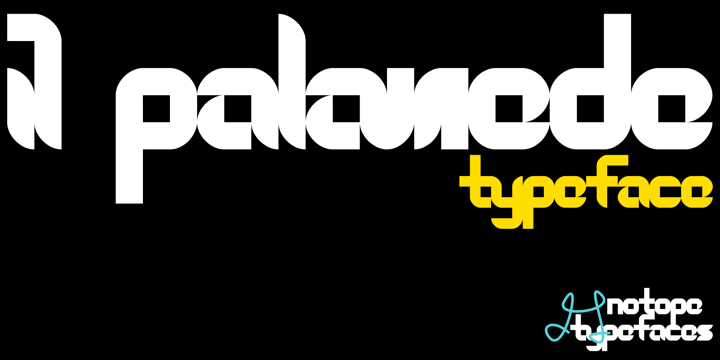
IL Palamede Font Family was designed by Ivan Larionov, and published by Notope. IL Palamede contains 1 styles and family package options.
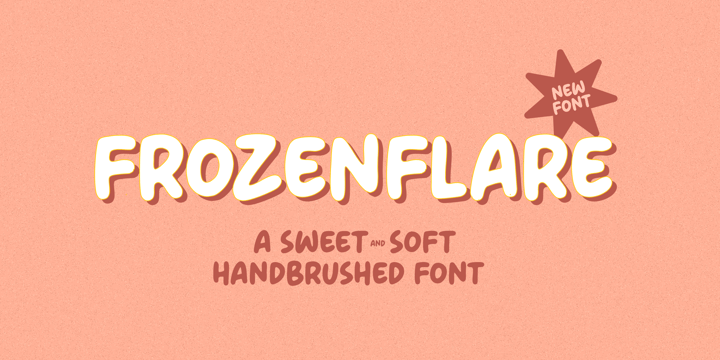
Frozenflare Font Family was published by Balpirick. Frozenflare contains 1 styles and family package options.
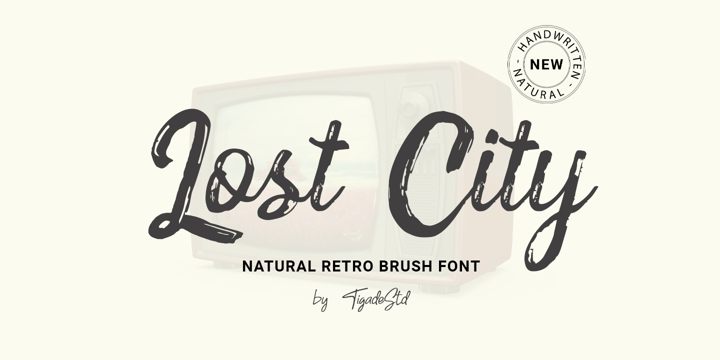 |
| Lost City Font Family was published by Tigade Std. Lost City contains 1 styles and family package options. |
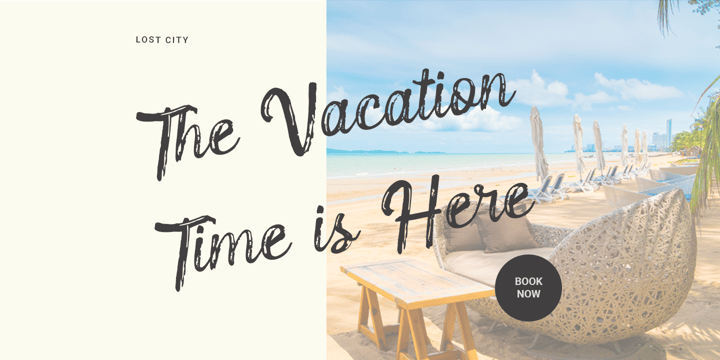 |
| Lost City |
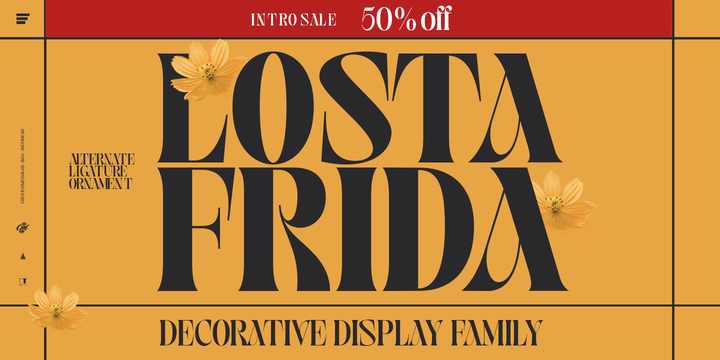 |
This family contains 5 weights and ornaments to create an artistic touch to your projects.
Has tons of alternates and ligatures. Best for branding, Webdesign project, Clothing brand, logo design, valentine's greetings, packaging, and much more. Comes with a variable format as well as multilingual support, numbers, and currency symbols.
 |
YWFT Hugo has a broken, scrawled quality that commands the viewer's attention by making them slightly uneasy: who is responsible for this crazy script, and more importantly, are they a safe distance away? At the same time, YWFT Hugo radiates a childlike innocence and joy, big sloppy blocks haphazardly forming words. That's the power of YWFT Hugo—it can go either way depending on your context. Its urgent simplicity and unique staggered quality make it the perfect choice for poster art, web design, packaging, educational tools, social media, art projects, branding, magazines...wherever you need a sloppy, blocky, abstract print.
YWFT Hugo includes opentype features like alternates, and a larger 500+ glyph set.
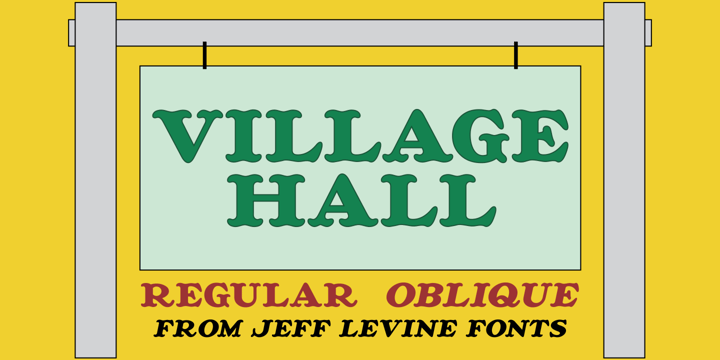 |
A 1918 poster issued during World War I from the YWCA encouraged women to pitch in to the war effort by joining the “United War Work Campaign”.
The Art Nouveau hand lettering of that poster was a slight throwback to the “Western” or “Victorian” style of typography because of the characters having split serifs.
This is now available as Village Hall JNL, in both regular and oblique versions
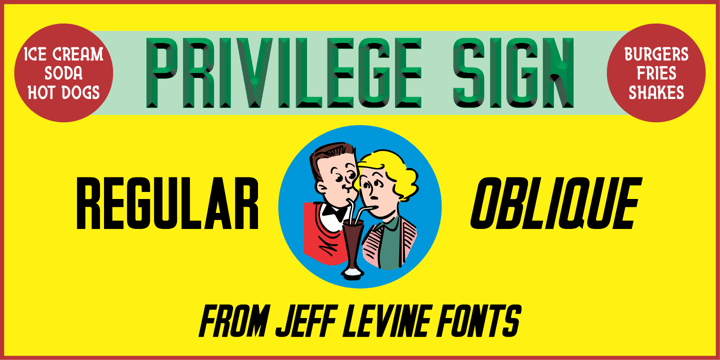 |
The above-the-store signage for many newspaper stands, soda shops, candy stores, luncheonettes and pharmacies of the 1950s and early 1960s were what was referred to as “privilege signs” provided by one of the major cola brands.
Consisting of the brand’s emblems on the left and right, the remainder of the sign would carry the desired message of the storekeeper (such as “Candy – Soda – Newspapers”) in prismatic, embossed metal letters.
Inspired by these vintage signs, Privilege Sign JNL recreates the condensed sans serif lettering style in both regular and oblique versions. The typefaces are solid black, but adding a selected color and a prismatic effect from your favorite graphics program can reproduce the look and feel of those old businesses.
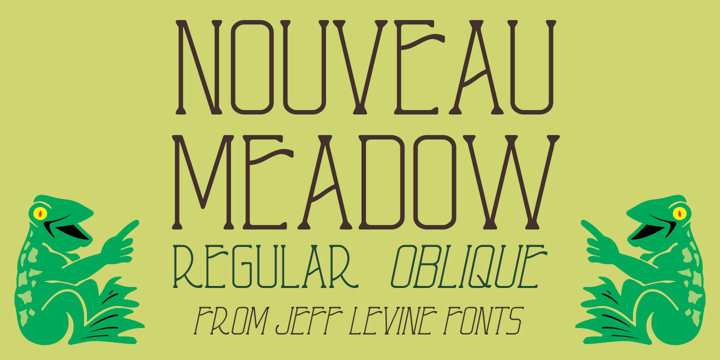 |
A poster for the publication “The Quartier Latin – A Magazine Devoted to the Arts” featured the magazine’s name in a light Art Nouveau serif style. The Quartier Latin was published between 1896 and 1899 by the American Art Association of Paris.
This is now available as Nouveau Meadow JNL in both regular and oblique versions.
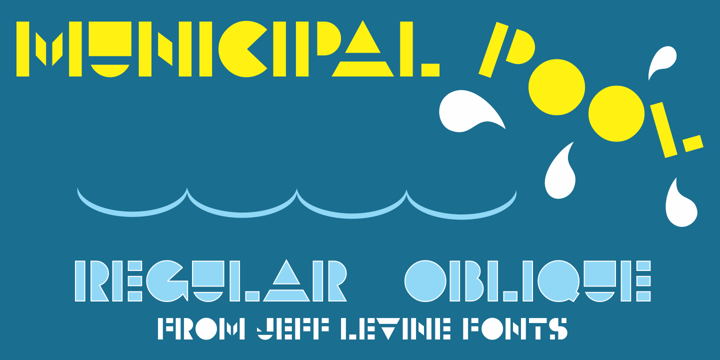 |
A photo of the now closed [circa-1953] Lowell Municipal Pool (at 1601 N. 28th St.) in Boise, Idaho shows the words “Municipal Pool” formed into the cement of the entrance to the above-ground swimming facility.
Both the lettering and building entrance designs harken back to the Art Deco era and the sign features stencil-like characters.
This inspired a typeface aptly named Municipal Pool JNL, and is available in both regular and oblique versions.
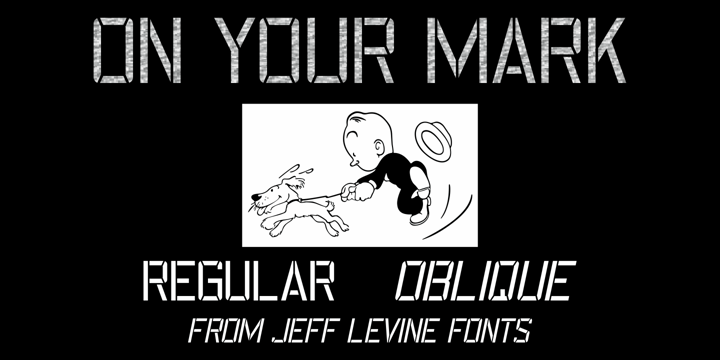 |
Images of ‘lost’ or forgotten signs from the past are on a number of sites all over the web.
One in particular partially revealed a vintage sign for “J. Yormark Shoes" behind a barbershop sign at 15 – 8th Avenue in New York City. The sign remained until 2014.
The stencil effect made by the formation of the stained glass letters inspired On Your Mark JNL, which is available in both regular and oblique versions. The font’s name is a play on the shoe vendor’s name… “Yormark”.
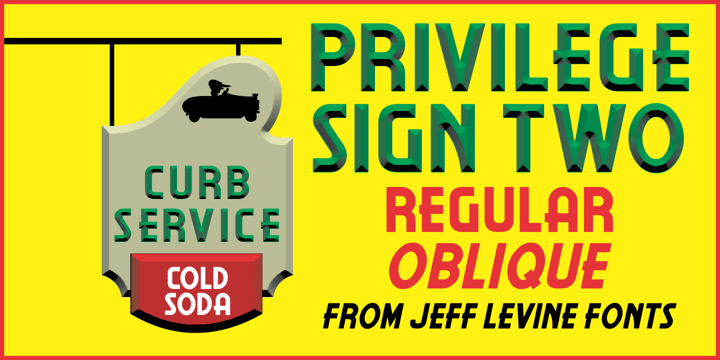 |
Unique and decorative signage for many drive-ins, motels, food stores and other businesses of the 1940s had what was referred to as “privilege signs” provided by one of the major cola brands.
Consisting of the brand’s emblem on a decorative panel, the remainder of the sign would carry the desired message of the storekeeper (such as “Drive-In”) in prismatic, embossed metal letters.
Inspired by the Art Deco sans serif style of those vintage signs, Privilege Sign Two JNL recreates the type design in both regular and oblique versions. The typefaces are solid black, but adding a selected color and a prismatic effect from your favorite graphics program can reproduce the look and feel of those old businesses.
This is a companion font to Privilege Sign JNL, which recreates the condensed sans serif lettering of other privilege signs from
the 1950s and early 1960s.
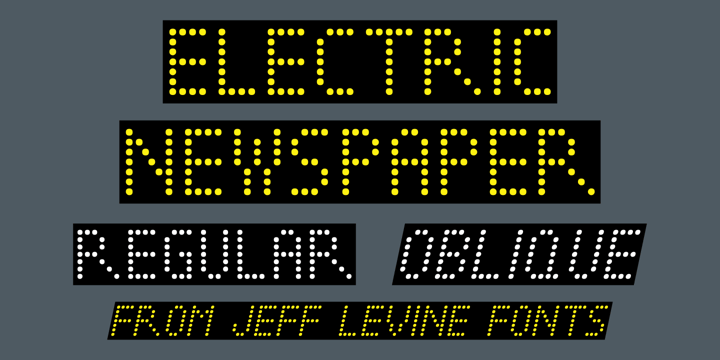 |
Around 1931, the Los Angeles Times (in partnership with the Richfield Oil Company) installed on its building a moving message board similar to the one at the New York Times in New York City which they dubbed an “electric newspaper”.
The style of characters used on this electronic sign were the basis for the namesake font Electric Newspaper JNL, which is available in both regular and oblique versions.
A blank space to place between words is available on both the solid bar and broken bar keystrokes.
 |
Office Staff JNL is a version [with serifs added] of Popularity JNL – a condensed Art Deco design based (for the most part) on a popular typeface known in some foundry books as ‘Radiant’ with some reinterpreted characters… and is available in both regular and oblique versions.
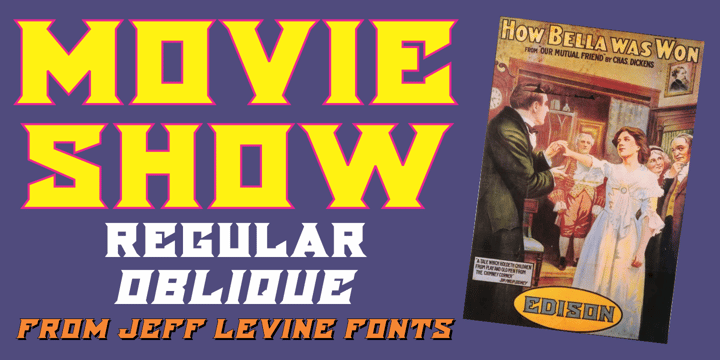 |
A 1911 movie poster for a film called “How Bella Was Won” from the Edison studios had the name “Edison” hand lettered in a bold, spurred sans serif design.
These few letters became the basis for Movie Show JNL, which is available in both regular and oblique versions.
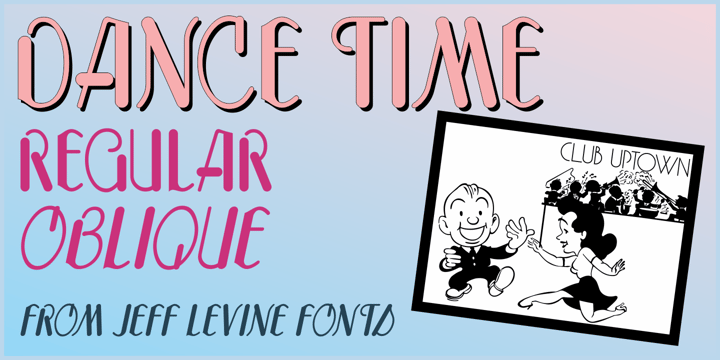 |
The words “Benny Goodman & His Orchestra” on an appearance poster for the band from 1936 were rendered in a beautiful semi-script style of hand lettering.
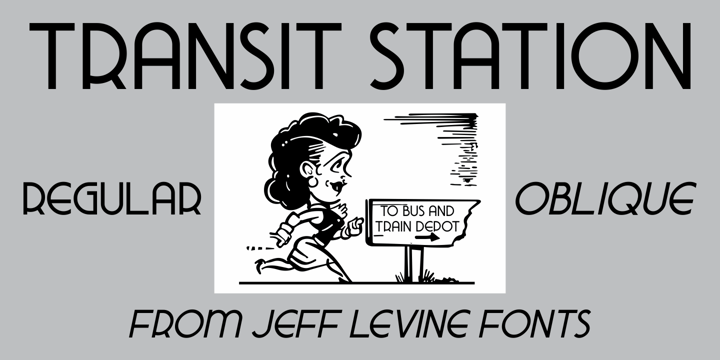 |
The thin and stylish Art Deco lettering of a neon sign above the Greyhound bus terminal entrance in a 1930s New York City photo inspired Transit Station JNL, which is available in both regular and oblique versions.
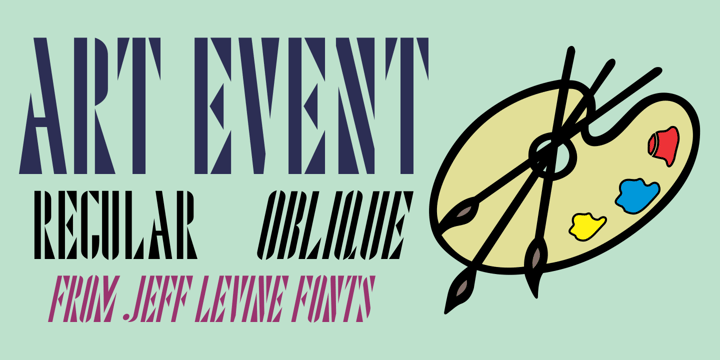 |
A 1930s WPA (Works Progress Administration) poster advertising an exhibit of New Jersey area posters had its main lettering rendered in a very condensed hand lettered interpretation of the ever-popular Futura Black Art Deco style.
This has now been re-drawn and digitized as Art Event JNL, in both regular and oblique versions.
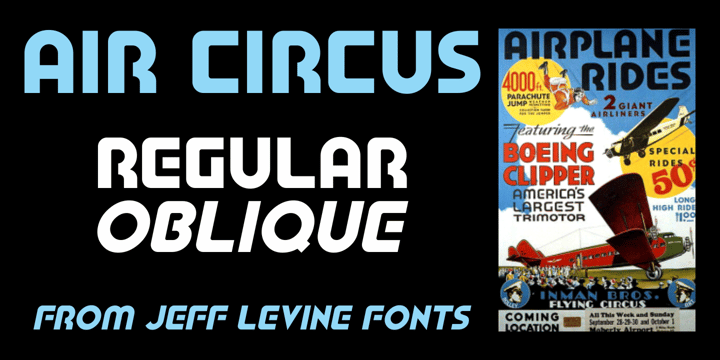 |
A 1930s advertising poster for the Inman Brothers Flying Circus offered up an interesting hand lettered Art Deco design that’s a cross between both squared and rounded character shapes.
Because of it's 'futuristic look', the resulting type style can also lend itself to 1970s and 1980s retro projects as well as those from the 1930s and 1940s.
Now a digital font, Air Circus JNL is available in both regular and oblique versions.
A “Flying Circus” is a troupe of ‘barnstormers’ (stunt pilots) who performed aerial tricks either individually or as a team along with selling airplane rides to the general public.

We present Woop a creative magazine templates for bloggers who love to blog on food, fashion, travel and for personal blog.
Enter your email address below to subscribe to our newsletter.